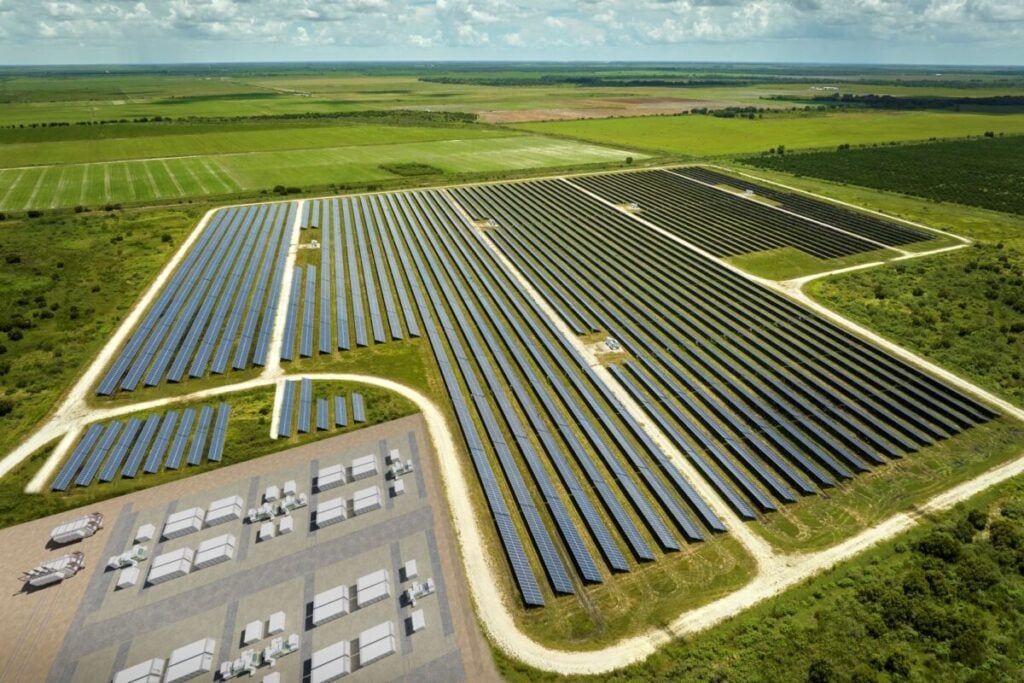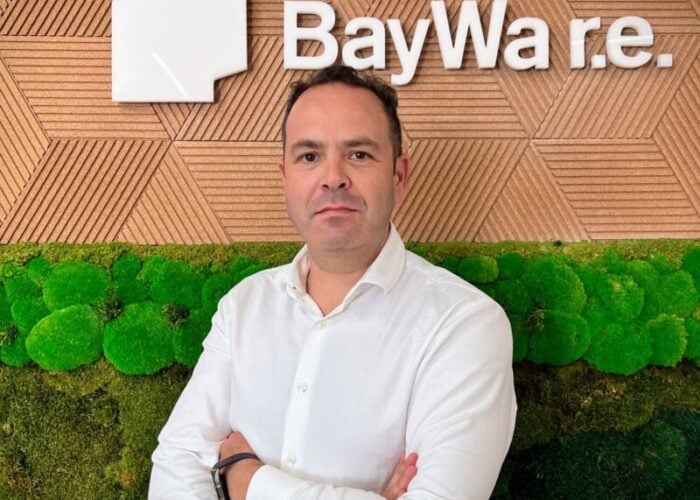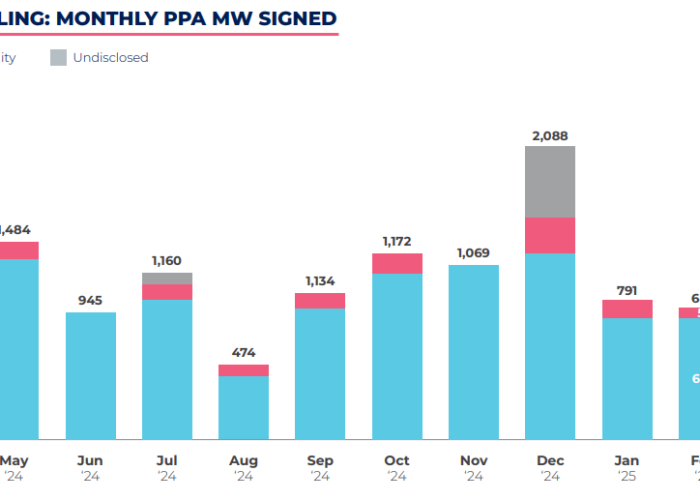
While not essential for every project, co-location is emerging as a strategic option for developers aiming to maximise value and adapt to evolving market needs.
The growing role of co-location
Adding co-located battery energy storage system (BESS) capabilities to a planned PV project offers several benefits, such as futureproofing against market volatility, increasing operational flexibility, and providing additional revenue streams through grid services. For energy providers, co-located BESS also mitigates the risk of solar cannibalisation – the drop in wholesale electricity priced caused by an oversupply of solar generation. By storing surplus energy on-site, operators can strategically release it when demand is high, optimising revenue and grid stability.
Unlock unlimited access for 12 whole months of distinctive global analysis
Photovoltaics International is now included.
- Regular insight and analysis of the industry’s biggest developments
- In-depth interviews with the industry’s leading figures
- Unlimited digital access to the PV Tech Power journal catalogue
- Unlimited digital access to the Photovoltaics International journal catalogue
- Access to more than 1,000 technical papers
- Discounts on Solar Media’s portfolio of events, in-person and virtual
Or continue reading this article for free
However, these advantages come with higher capital expenditure (capex) requirements and added technical challenges. Developers must address the complexity of managing two distinct technologies – PV systems and utility-scale batteries – within the same location. They also face hurdles in securing permits and permissions, which often involve separate and time-consuming processes for each component.
Progress is being made in some markets to ease these challenges. For example, in the UK, the decision by energy regulator Ofgem in May 2020 to end double-charging for battery storage removed a major cost barrier for co-located projects. This regulatory change, fully implemented by April 2021, marked a turning point in the UK energy market, encouraging more developers to integrate BESS into their PV projects.
Further momentum has come from the UK’s recent shift in political leadership, with the election of a pro-environment government focused on establishing the country as a clean energy superpower. This policy environment has created an attractive climate for investors and developers to commit to large-scale renewable energy projects that include storage.
But there is still room for improvement. Governments and regulators can put further measures in place to help streamline the co-location process for developers. This includes shortening the timelines for planning approvals and grid connections and simplifying permitting by consolidating requirements for PV systems and battery storage into a single framework.
Co-location is worth the extra cost
Adding battery units and their supporting infrastructure represents a considerable extra capex outlay for a developer. However, this upfront cost can yield long-term value by mitigating future risks, such as the potential depreciation of the project’s asset value as solar equipment costs continue to decline.
Adding BESS capability to a PV site also adds increasingly essential storage functionality. This offsets the ongoing commoditisation and falling Return of Investment of solar PV in a number of ways, including:
- Unlocking new revenue streams: Developers can offer grid management services like load balancing and frequency regulation to energy providers and Electricity System Operators (ESOs), enhancing the project’s revenue potential.
- Anticipating grid congestion: Co-location prepares for future grid constraints, as more and more renewable sites connect to the grid and the number of available network connection points become increasingly scarce.
There is a need for energy storage right now, in Europe and worldwide. This need will only grow as the number of renewable developments coming online increases. Energy providers will turn to battery storage for the flexibility they need to meet demand, manage supply and balance grid loads. Developers can meet this need by adding BESS capability to their projects. In so doing, they enhance the capital value of their asset and its operational value as well.
Different markets need different approaches
Countries everywhere need to add more storage to the energy infrastructure. However, the approach to meeting this need varies, driven by specific grid conditions and market priorities.
In Spain, for example, where the national grid is nearing saturation, government planners prioritise connection permit requests for PV projects that integrate battery storage. On-site BESS helps balance supply and demand by storing excess energy during periods of low demand, ensuring that no renewable energy is wasted when the grid is already at capacity.
In contrast, Italy focuses on large-scale standalone BESS projects which provide utility-grade balancing and load shifting services to stabilise the grid and ensure consistent supply. These standalone systems complement and reinforce the grid by providing flexibility, alleviating congestion at critical nodes, and mitigating price volatility.
There is no one-size-fits-all solution. The choice between co-located systems and standalone PV or BESS depends on a country’s grid infrastructure, energy market needs, regulatory framework and long-term goals. Each approach serves a distinct purpose, addressing the unique challenges and opportunities within its specific context.
Co-location is an investment for the future
The scarcity of grid connection points is already a challenge in many markets, driven by increasing renewable energy penetration and the growing need for grid-balancing solutions. This constraint will only intensify as more renewable energy projects come online, making co-location an increasingly practical and strategic choice for developers.
The large-scale adoption of co-location is becoming less a matter of “if” and more of “when”. As demand for renewable energy continues to grow, grid operators and energy companies will rely on co-located renewable solutions to address supply-demand imbalances, mitigate grid congestion, and enhance overall system flexibility.
For developers and investors, co-location offers a valuable opportunity to address these challenges while optimising the value of their assets. While every company will evaluate its options based on specific circumstances, the growing market need for co-location suggests it is a solution worth considering in both current and future project planning.
Gabriele Buccini is Head of Utility Storage for Europe at Trinasolar.
PV Tech’s publisher Solar Media will host the Renewables Procurement & Revenue Summit on 21-22 May 2025 in London. The event will explore meeting Europe’s energy demand, the role of data centres in the energy transition, the outlook for European power and PPA prices and more. For more information, go to the website.







